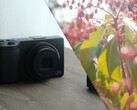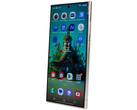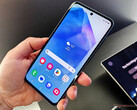CheckMag | Smartphone cameras suck — buy a compact camera and a mid-range phone for better photography

It's no question that smartphone photography has come a long way in the last decade, but so have compact digital cameras, resulting in ever-increasing image quality coming from ever more compact camera bodies.
If you're looking to get into photography, the best thing you can do is learn the basics, like composition and exposure, with the tools you have — likely some form of smartphone. However, if you're on the hunt for a new smartphone, and you know you predominantly use your phone to take photos, there's never been a better time to get a cheaper smartphone and a dedicated camera instead of buying the phone with the best camera.
It used to be that to get even passable smartphone photos in anything short of perfect lighting, you had to buy a high-end flagship — something like the Samsung Galaxy S24 Ultra (curr. $1,289.97 on Amazon) or the Xiaomi 14 Ultra — but nowadays, even a fairly basic phone, like the Samsung Galaxy A54 (curr. $374.99 on Amazon) is capable of producing reasonable images most of the time.
That said, smartphones have some serious limitations: You're locked into whatever focal lengths are included with the phone; sensor sizes of under 1-inch are severely limiting in low light; and smartphone cameras, with their wide apertures, suffer under very bright sunlight, especially when recording video.
At the same time, the world of digital cameras, specifically since the mirrorless camera boom, has also been advancing in leaps and bounds. Given the incredible image and lens quality you can get in such compact packages these days, there really is no excuse for having to resort to tiny sub-1-inch smartphone sensors.
Cameras have bigger sensors — meaning much more light and better dynamic range — better ergonomics, and way more flexibility, thanks to interchangeable lenses. Speaking of lenses, quality camera lenses are like magic for image quality, and in this day and age, it's difficult to find a badly made lens from a popular lens brand.
Even the $1,800 Fujifilm X100VI, with its fixed focal length, presents quality benefits that a smartphone could only dream of matching. The built-in ND filter combined with the tactile dials, hybrid viewfinder, and Fuji's legendary colour science elevate both the shooting experience and the results.
What's more, the smartphone industry, especially when talking about flagship phones, has created the perfect set of conditions to allow users to upgrade less frequently, freeing up some of that budget for more sensible purchases.
Nothing Phone (2a) released through own website with limited-time AI offer https://t.co/BKbDUDhnAr #notebookcheck #news #tech
— notebookcheck.net (@nbc_net) March 12, 2024
Replace your next smartphone upgrade with a camera
Most flagship and even mid-range smartphones from brands like Apple, Google, and Samsung are now receiving as many as seven years of software support. They also have hardware more than powerful enough to deliver a smooth, snappy experience in everyday apps, even years down the line. Given just how affordable mirrorless cameras can be, it makes sense to at least consider upgrading to a “real” camera instead of hoping Apple, Google, or Samsung's software can get the white balance right or produce pleasing portrait mode background blur.
There are plenty of affordable cameras that don't demand that you make those same sacrifices to image quality.
Nikon's retro-flavoured Z fc is just $1,096.95 on Amazon, even with a stabilised Nikkor Z DX 16–50 mm f/3.5–6.3 VR lens.
If you're looking for something even smaller, the Panasonic GX85 is still kicking around on Amazon for as little as $647.99 — only a hair more than the Samsung Galaxy S23 FE — and that's with two pocket-sized M4/3 lenses, to boot.
The Fujifilm X-T30 II, which delivers flagship-tier APS-C performance from a very small body, can be found used or as new old stock for Samsung Galaxy S24 Ultra prices — $1,299 with an XF18–55 mm kit lens on Amazon.
Look at the used market from a retailer like KEH camera, and you can get even better bargains on incredibly capable cameras, like the Fujifilm X-T3 for around $800, a Fujifilm X-E3 for less than $800, or a Panasonic Lumix G9 for under $700. These are only examples from recent generations — go back further, and you're looking at magnificent M4/3 cameras for under $500.
As just two examples, KEH has the legendary Panasonic Lumix GH4, which records 4K video and was a favourite for YouTube creators for a long time, for as little as $220.78. The newer Lumix G7 is just $325.55 in almost new condition, while an Olympus OM-D E-M10 Mark II can be had for just $338.79. There are tons of examples of used camera bodies that will serve you brilliantly for well under the price of a flagship phone.
It isn't that image quality is all there is to it, either. While a phone is sort of designed to distract you with its notifications and shiny app icons, a camera does the opposite.
When you take out a camera to take a photo, that's all you can do with it. There's no Instagram, Facebook, or X (formerly Twitter) to pull you out of the act at any point during the shooting experience. So, while it might take a little more effort to shoot with a camera, although not much, given how good automatic and priority shooting modes are these days, the results are often more carefully considered.
As mentioned previously, a camera also gives you a level of flexibility and control that a smartphone simply doesn't. Sure, depending on the brand, you can sometimes adjust contrast, exposure, or saturation on a smartphone, but you typically don't have enough control over what the phone is doing to make sure you get the result you want. There is always going to be interference from the phone's image processing pipeline.
It's even worse when it comes to video capture, where it's basically impossible to set the “correct” shutter speed outside of basically perfect conditions. This is why smartphone videos can have that strange jerkiness to them. The Xiaomi 14 Ultra comes close to solving this with its variable aperture, but it still lacks the range of a dedicated camera.
Isn't it worth it to use something more fit for purpose to capture precious memories of your friends and family? Sure, even compact cameras might not be as discreet as a smartphone, but they're usually close enough that anyone that regularly wears a backpack won't notice a difference, and the gap in image quality these days can be night and day — especially when people are involved.
Plus, if you use a camera, you're more likely to have juice left in your phone to doomscroll your favourite social media site after your day's activities.









![Oppo Find X7 Ultra gets an impressive camera score on DxOMark (Image source: Oppo [Edited])](fileadmin/_processed_/5/9/csm_Oppo-Find-X7-Ultra-DxOMark_1aba1f4b08.jpg)


![Xiaomi 14 scores well in the premium segment of DxOMark (Image source: Xiaomi and DxOMark [edited])](fileadmin/_processed_/7/a/csm_Xiaomi-14-DxOMark-Ranking_052b9677e7.jpg)

